
The European Transport Safety Council (ETSC) organized the REVIVE Conference which took place with great success in Brussels, on 18 June 2019. This conference brought together road safety practitioners and legislators, and those working in the fire and rescue and emergency medical systems. It provided an opportunity to learn more about the work of the REVIVE project and to discuss good practice in the emergency response across Europe. The aim of the REVIVE project was to map Emergency Medical Service (EMS) and Rescue and Fire Service (RFS) practices in the EU28 and raise the profile of both EMS and RFS on the national and European political agendas. ![]()

The European Transport Safety Council (ETSC) has published a Report titled “Road Safety Priorities for the EU 2020-2030: Briefing for the European Parliamentary Elections”. This ETSC Report suggests additional legislation priorities over the period 2019-2024, concerning: a) the improvement of cyclists, pedestrians and powered two wheelers safety, b) automated and connected mobility, c) the reduction of serious injuries on EU roads, d) the efficient enforcement, e) the drug driving and f) the education and training (revision of the European Driving License Directive). ![]()
![]()
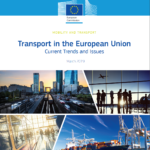
The European Commission’s Directorate General for Mobility and Transport (DG Move) published a Report titled: “Transport in the European Union: Current Trends and Issues“. The Report sets out the key trends and issues for the single European transport area, the development of a safe transport infrastructure network across EU countries, and the external costs of transport, accompanied with the respective country analyses. Special emphasis is given to the consequences of road accidents. ![]()

The 4th SaferAfrica Dialogue Platform Workshop took place with great success in Brussels, Belgium, on 4th of April 2019. After the previous workshops in Marrakech, (Morocco, November 2017), Athens, (Greece, April 2018) and Abidjan, (Ivory Coast, November 2018), this workshop focused on SaferAfrica Overview and current activities, the Road Safety Observatories and Capacity Building in Africa. The SaferAfrica partners, the members of the Management Board and African Stakeholders coming from Cameroon, Nigeria, Egypt, Ethiopia, Kenya, Uganda, Zambia have contributed actively to the discussion n the future of road safety in Africa. ![]() NTUA actively contributed with the following presentation:
NTUA actively contributed with the following presentation: ![]() The SaferAfrica African Road Safety Observatory
The SaferAfrica African Road Safety Observatory

The Sixth Global Meeting of Non-Governmental Organizations Advocating for Road Safety and Road Victims took place with great success in Chania, Crete, Greece, from 8–13 April 2019, attended by 270 participants including NGOs and road safety stakeholders from 76 countries around the world. Highlights included workshops, training, the poster exhibition opened by Jean Todt, the High-Level Symposium, the FedEx Road Safety Award, photo exhibition, the preparations for UN Global Road Safety Week and the Third Ministerial Conference on Road Safety in Sweden 2020. ![]() The NGOs Road Safety Declaration is available here:
The NGOs Road Safety Declaration is available here: ![]()

ERTRAC organised the Annual Conference 2019: Road Transport Research towards “Horizon Europe” which took place with great success in Brussels, on 4 April 2019. The conference was dedicated to the preparation of the 9th Research Framework Programme “Horizon Europe”: which place for Road Transport Research and which key research challenges? Three new Roadmaps were presented and distributed: on “Connected Automated Driving“, on “Road Safety“, and on “Long Distance Freight Transport“. The event included an exhibition showcasing some examples of innovation in the automotive and mobility sector. ![]()
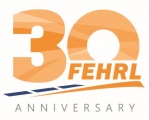
The FEHRL Infrastructure Research Meeting 2019 (FIRM19) took place with great success on 26-28 March 2019 in Brussels, Belgium. The theme was “On-Ramp to innovation: Let’s co-create together our future transport infrastructure“ and it coincides with the celebration of the 30th anniversary of FEHRL. The main stakeholders (EC, CEDR, PIARC, ERTRAC, ECTP) outlined the vision for the future cross-modal transport infrastructure and its implementation plan. ![]()
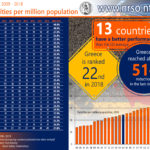
According to the EU road fatalities infographic of the NTUA Road Safety Observatory, thirteen countries have a better performance than the EU average, namely UK, Denmark, Ireland, Netherlands, Sweden, Malta, Germany, Spain, Finland, Slovenia, Austria, Slovakia, and France. Greece has been ranked 22nd in 2018 but has demonstrated the highest road fatalities rate reduction (51%) in the last decade, followed by Slovenia (48%), whereas the EU average 10-year reduction is 31%. ![]()

The International Transport Forum (ITF/OECD) published recently a new Report: “Road Safety in European Cities – Performance Indicators and Governance Solutions”. This reports benchmarks road safety performance for 72 urban areas, mostly in Europe, and illustrates governance solutions to improve urban road safety with case studies conducted in Lisbon (Portugal) and Riga (Latvia). The report proposes new road safety indicators to assess the level of risk for each mode of transport. It finds that a modal shift away from private motor vehicles could significantly enhance road safety in dense urban areas and deliver public health benefits associated with increased physical activity and improved air quality. ![]()
![]()
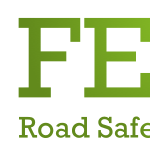
The Forum of European Road Safety Institutes (FERSI) has restyled and updated its website. The website not only provides information about FERSI, its members and activities, it also provides relevant links to road safety information, road safety organisations, major policy documents and European projects. ![]()
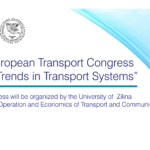
The European Platform of Transport Sciences (EPTS) oganised with great success the 17th International Conference – ETC 2019 which was held in Bratislava, Slovakia, on 13-14 June 2019. Since its first meeting in 2001 in Vienna the purpose of EPTS is the enhancement of the dialogue between politics, science and economy in the field of European transport. This is to be accomplished by organising scientific events, encouraging the exchange of opinions and experiences, joint PR efforts, the enhancement of scientific research and continuing education, cooperation with other scientific institutions and support of young scientists, especially through the Young Forum of European Transport Sciences (YFE). ![]()
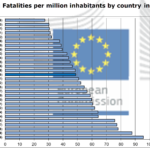
According to the European Commission preliminary statistics, fewer people died on European roads in 2018 but more efforts are needed to make a big leap forward. In 2018, there were around 25.100 fatalities in road accidents in the EU 28. This is a decrease of 21% compared to 2010, and 1% compared to 2017. The EU countries with the best road safety results in 2018 were the United Kingdom (28 deaths/million inhabitants), Denmark (30/million), Ireland (31/million), and Sweden (32/million), whereas the best improvement since 2010 was demonstrated by Greece (-45%) and Lithuania (-43%). With an average of 49 road deaths per one million inhabitants, this confirms that European roads are by far the safest in the world, but it also shows that we are off track to reach our target of halving the number of road deaths by 2020. ![]()
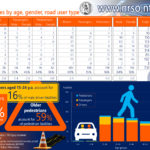
According to Hellenic Statistical Authority (ELSTAT) data, 731 persons were killed in Greece in 2017: 507 drivers, 106 passengers and 118 pedestrians. Male drivers account for 66% of all road fatalities in Greece. Young male drivers aged 15-24 years old account for 16% of all male driver fatalities and older people account for more than 59% of all pedestrian fatalities. The higher accident severity was found in accidents involving older persons (6.4 fatalities per 100 accidents) and young people 15-24 years old (3.7 fatalities per 100 accidents). ![]()
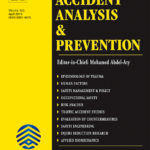
A paper titled “The European road safety decision support system on risks and measures” authored by the Horizons 2020 SafetyCube project team is now published in Accident Analysis and Prevention. The European Road Safety Decision Support System is an innovative system providing the available evidence on a broad range of road risks and possible countermeasures. This paper describes the scientific basis of the DSS. The structure underlying the DSS consists of (1) a taxonomy identifying risk factors and measures and linking them to each other, (2) a repository of studies, and (3) synopses summarizing the effects estimated in the literature for each risk factor and measure, and (4) an economic efficiency evaluation instrument (E3-calculator). ![]()

FIA launched a brand new visualized tool-website with key figures on vision and its impact on road safety in 14 countries all over the world. It provides data regarding visual disorders population percentages of each country, vision legislation and driving license, minimum acuity for both eyes, minimum vision field etc. ![]()
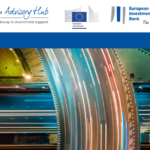
European Investment Bank and European Commission join forces to support investments in transport safety with special focus on roads. At the TEN-T and CEF Conference in Bucharest, the EU Commissioner for Transport Violeta Bulc together with Vice-President of the European Investment Bank (EIB) Vazil Hudák launched the “Safer Transport Platform” to promote safety as a key element for transport investment and to provide easy access to technical and financial advice, in particular for road safety. The “Safer Transport Platform – Road Safety Advisory” is available via a dedicated website. ![]()
![]()
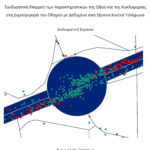
A Diploma Thesis titled “Combined impact of road and traffic characteristics on driver behavior using data from smartphones” was recently presented by Virginia Petraki. High resolution driving behavior data were collected through the OSeven smartphone application which were combined with traffic and road geometry characteristics and subsequently were depicted spatially using GIS. From the application of these models it is observed that in road segments there is an increase in the number of harsh events if average traffic volume per lane increases in the respective segments. Furthermore, in junctions as the average occupancy increases, there is an increase in harsh accelerations, and as average speed increases more harsh decelerations occur. ![]()
![]()
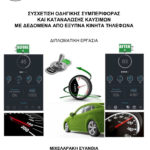
A Diploma Thesis titled “Correlation of driver behaviour and fuel consumption using data from smartphones” was recently presented by Eva Michelaraki. The aim of this Diploma Thesis is the correlation of driver behaviour and fuel consumption using data from smartphones. To achieve this objective, data collected from 17 drivers who participated at a naturalistic driving experiment for four months are analyzed. The results demonstrated that there was a remarkable reduction in fuel consumption, by improving the way participants were driving and also a smoother and a greener driver behavior was achieved. A stronger correlation has emerged between harsh accelerations and fuel consumption, but also speed, braking, smartphone usage while driving, driving at night and demographic features had a direct impact on fuel consumption. ![]()
![]()
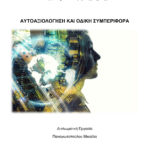
A Diploma Thesis titled “Self-assessment and Road Behaviour” was recently presented by Mikaela Panagiotopoulou. A pilot simulator experiment was conducted and a questionnaire was filled in a sample of 125 drivers. The application of the models revealed that the drivers who have positively self-assessed their driving abilities drive faster and showcase speedy reaction time. The drivers in general, evaluated realistically their driving skills with an exception when it came to the safety driving measures which were: keeping an adequate headway from the vehicle in front, accurately adjusting their speed on different driving conditions, maintaining speed limits. ![]()
![]()

A Diploma Thesis titled “Greek drivers’ attitudes towards aggressive driving” was recently presented by Aggeliki Stefatou. The objective of this Diploma Thesis is the investigation of the characteristics of driver aggressiveness in Greece via their perceptions on their own behavior and the behavior of other drivers. Specifically, within the framework of the SafeCulture survey, the answers of 302 car drivers and 201 two-wheeler drivers on 8 questions regarding speed, 6 questions regarding overtaking behavior and aggressiveness and 4 questions regarding alcohol consumption were analyzed. Results indicate that drivers do not perceive traditional crash factors as causes for their crash involvement. The only contributing factors perceived by drivers was found to be those involving driver overtaking behavior and aggressiveness. ![]()
![]()

A Diploma Thesis titled “Spatial analysis of driver safety behavior using data from smartphones” was recently presented by Ilias Parmaksizoglou. Smartphone driver behaviour data were processed in a GIS computer environment, resulting to the development of new tables describing the phenomena observed on the map of a major road axis in Athens, in nodes and links. Analytic maps were developed aiming to indicate patterns of the accumulation and ranking of the harsh events in the selected road axis. Finally, four linear regression models were developed, which demonstrated speed as the most statistically significant factor in predicting harsh events per day on a region basis. ![]()
![]()
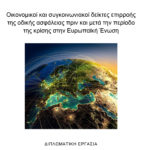
A Diploma Thesis titled “Impact of economic, social and transport indicators on road safety during the crisis period in Europe” was recently presented by Valentina Vassili. For this analysis of this Diploma Thesis a database containing Gross Domestic Product per capita (GDP), motorway-kilometers per road network-kilometers, vehicle fleet per population and road fatalities for European states for 2000-2016 was developed. The results led to the conclusion that Gross Domestic Index per capita has the most important impact and its increase leads to road fatalities decrease. Moreover, the increase of motorway-kilometers per road network positively affects the road fatalities decrease. ![]()
![]()
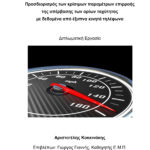
A Diploma Thesis titled “Identification of critical driving parameters affecting speeding using data from smartphones” was recently presented by Aris Kokkinakis. Data collected from sixty- eight drivers who participated at a naturalistic driving experiment for fifteen months were analyzed with the use of linear regression modelling. The results revealed that key parameters like distance, high intensity harsh accelerations and braking, harsh cornering, average deceleration and mobile usage, had statistically significant on driver speeding behaviour. The number of high intensity harsh brakings had the most significant impact on speeding, whereas for each type of road separately, distance was the most significant parameter. ![]()
![]()

On March 27, 2019 in Ljubljana, the Interreg funded RADAR project organised the first Road Safety Expert Group meeting focusing on Safer Roads Investment Plans. Special emphasis was given into optimisation of using limited road investment and road safety investment funds, by supporting most cost-benefit effective engineering solutions at the most appropriate locations / road sections. ![]() NTUA actively contributed with the following presentation:
NTUA actively contributed with the following presentation: ![]() Key points for Road Sections Safety in Greece
Key points for Road Sections Safety in Greece
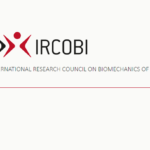
The 2019 International Research Council on the Biomechanics of Injury Europe Conference will take place in Florence, Italy, on 11-13 September 2019. The focus of IRCOBI is on the avoidance and reduction of the severity of traffic accidents, with special emphasis on advanced safety technologies and the biomechanics of injury. ![]()

The Romanian EU Presidency, the Ministry of Transport of Romania and the European Transport Safety Council (ETSC) organised the International Road Safety Conference with great success in Bucharest on 20-21 March, 2019. Special focus was given on promoting and accelerating the implementation of effective road safety solutions, including digitalisation and innovation, reduction of serious injuries, speed management and infrastructure safety. ![]() NTUA actively contributed with the following presentation:
NTUA actively contributed with the following presentation: ![]() Progress in MAIS3+ Serious Injuries Data Collection
Progress in MAIS3+ Serious Injuries Data Collection

The EU institutions have reached a provisional political agreement on the revised General Safety Regulation. As of 2022 new safety technologies will become mandatory in European vehicles to protect passengers, pedestrians and cyclists. Key new technologies include intelligent speed assistance, lane-keeping assistance, advanced emergency braking, warning driver drowsiness and distraction, reversing safety with camera or sensors and data recorder in case of an accident (black box). Advanced safety features will reduce the number of accidents (90% of which are due to human error), pave the way towards increasingly connected and automated mobility, and boost the global innovation and competitiveness edge of the European car industry. ![]()

The 32nd ICTCT conference was held in Warsaw, Poland on 24-25th October 2019, under the theme “Vision zero for traffic fatalities and serious injuries – research questions and challenges”. ICTCT approaches safety as an integral part of the wider road traffic system, envisaging all transport modes with a specific emphasis on vulnerable road users. ![]()
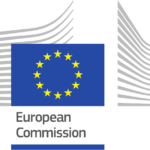
The European Commission adopted recently new rules stepping up the deployment of Cooperative Intelligent Transport Systems (C-ITS) on Europe’s roads. The new technology will allow vehicles to ‘talk’ to each other, to the road infrastructure and to other road users – for instance about dangerous situations, road works and the timing of traffic lights, making road transport safer, cleaner and more efficient. The new rules are in line with the proposals on clean mobility introduced by the Juncker Commission, are a further step for modernising the European mobility sector, preparing it for climate neutrality in the second half of the century and contributing to the EU’s long-term goal of moving close to zero fatalities and serious injuries by 2050 (“Vision Zero”). ![]()
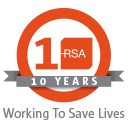
The Road Safety Authority of Ireland (RSA) organised with great success the Annual Conference under the theme “International Best Practice in Road Safety Strategy Development” which took place in Dublin on 13 June 2019. This year’s conference looked at international developments and the benefits of a strategic approach to road safety. The speakers shared their expertise and experiences in the development of best practice in road safety strategy formulation and performance measures. The speakers were from a variety of backgrounds including operational, academic and policy development. The Conference was a precursor to the development of the next Government Road Safety Strategy.














































































































































































